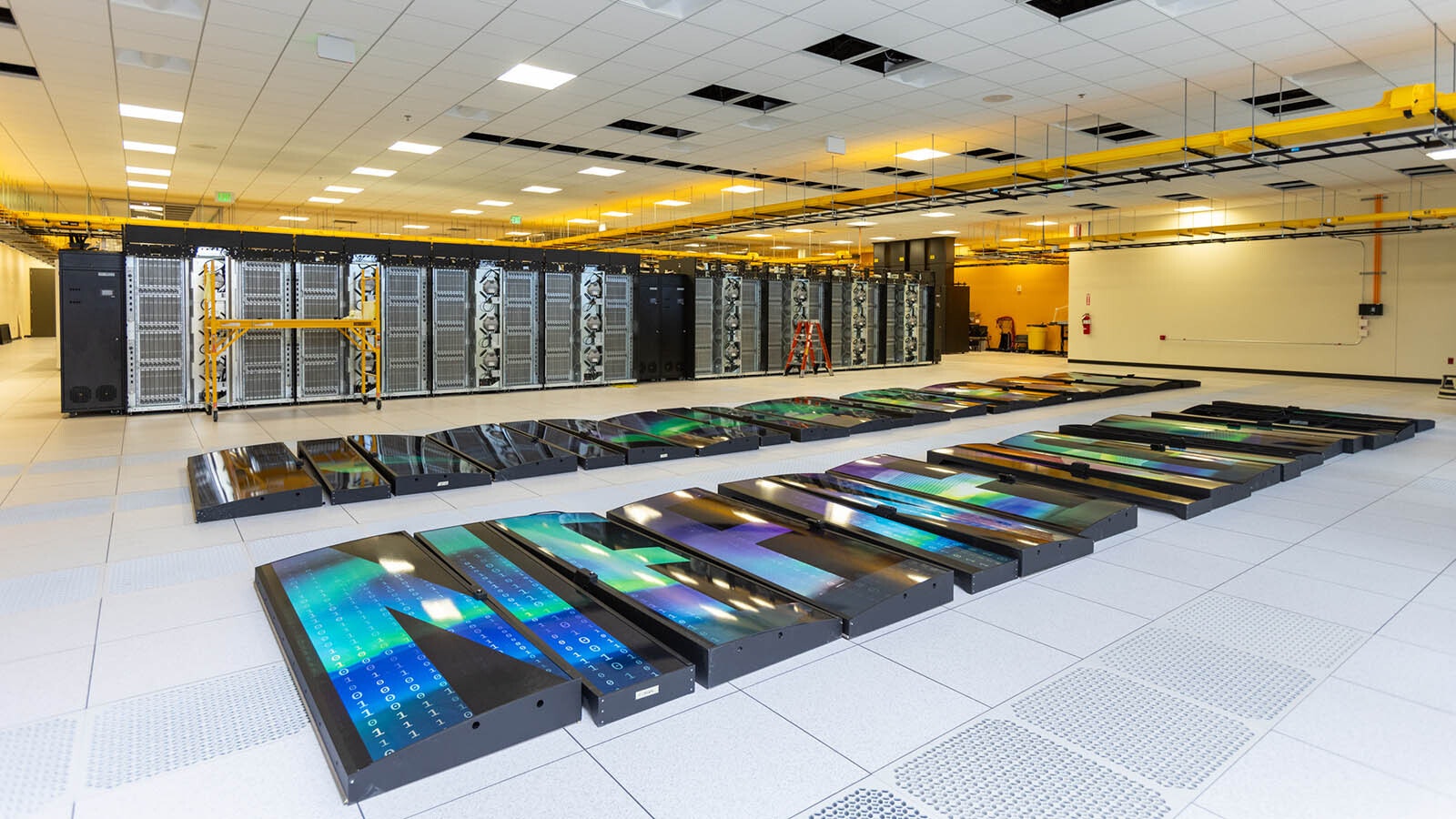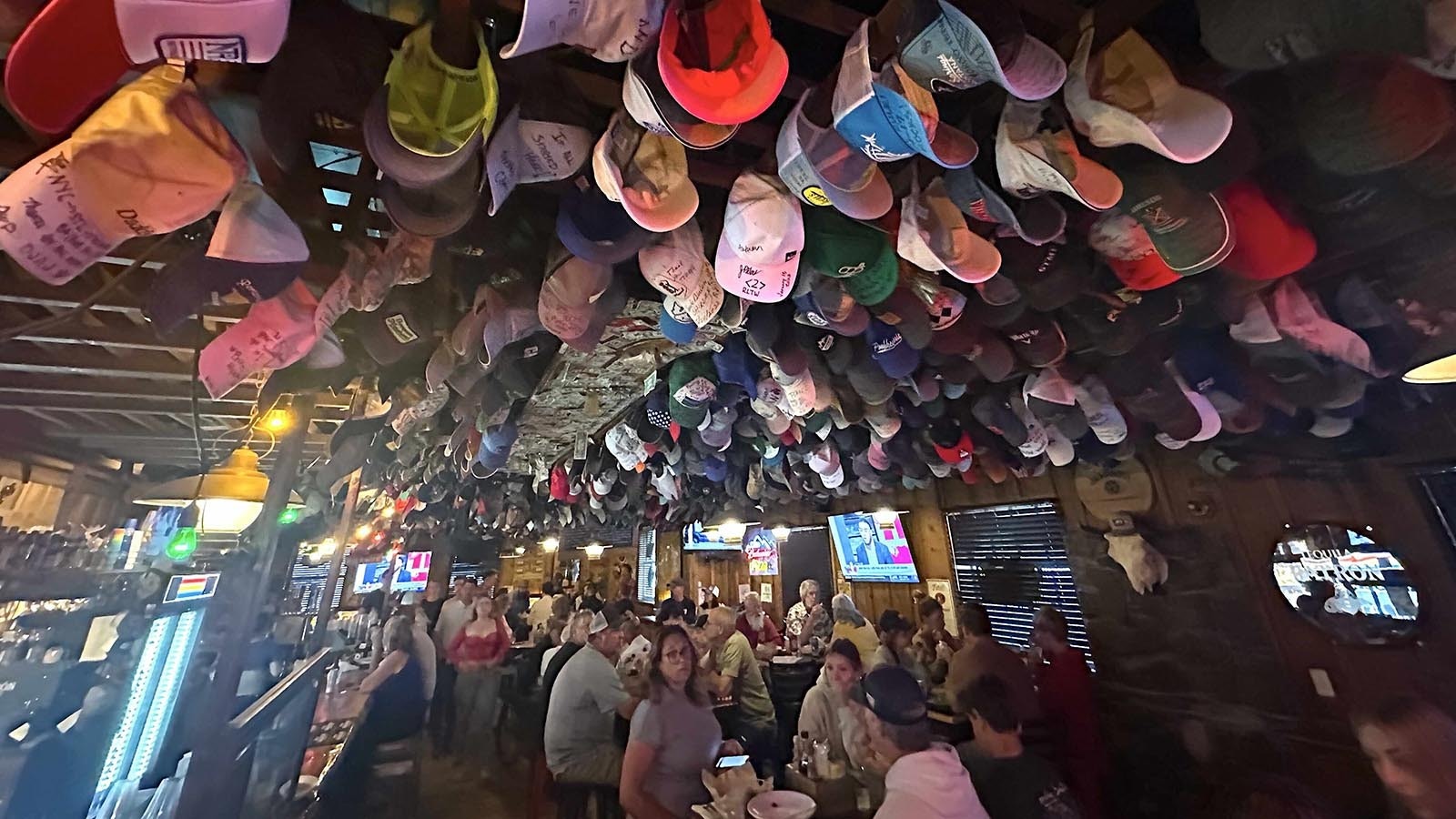A mystery buyer will be able to surf the internet like nobody’s business after putting in the winning bid to buy the Cheyenne supercomputer for a bargain-basement price of just $480,000.
The supercomputer that’s housed at the National Science Foundation’s National Center for Atmospheric Research in Cheyenne was sold in a recently closed U.S. General Services Administration auction after seven years in service.
Saying the winning bidder will walk away with the machine could be a little bit of a misnomer, though. The machine weighs 47 tons in all, so no one is actually going to be walking away with anything.
In fact, the auction website notes that a professional moving company will be required to remove the unit housed at the NCAR station, where it has played a vital role in scientific research to improve weather modeling.
About 134 universities involved in atmospheric research have used the Cheyenne supercomputer for the last seven years on a wide range of projects, including the study of wildfires and hurricanes on earth on out to solar flares in space.
“At one time it was in the top 20 (of supercomputers) worldwide in terms of power,” NCAR Director of High-Performance Computing Division Irfan Elahi told Cowboy State Daily. “In the last year, more and more powerful systems have been coming up, though.”
Still Packs A Punch
The age of Cheyenne means its parts are more difficult to get, NCAR Education and Multimedia Specialist Summer Wasson told Cowboy State Daily.
But it’s still a Ferrari when it comes to computing power.
“Super computers don’t have hard drives (like laptops),” Wasson said. “But it does have processors and memory, which are nodes.”
These processors are contained in row upon row of silver metal boxes, called blades, which are about the size of a personal-sized pizza box.
“If I pull out a blade and open it like a pizza box, it has four processors on each side,” Wasson said. “There’s the equivalent of 144,000-plus computers in this entire supercomputer.”
Just imagine 144,000 laptops all going at the same time.
The processors don’t generally all work on the same task at the same time, however. They can be put to work on multiple independent projects at the same time.
The machine is also extremely fast, Wasson said.
Its speed is measured by what are called FLOPS, or floating point operations per second.
Cheyenne does 5.34 petaflops, which is the equivalent of 5.3 quadrillion calculations per second — one heck of a super math test.
Research, Crypto Or Russian Spy?
Half a million dollars is actually a bargain for such a machine, Elahi said, because it can still be put to good use by the right buyer.
“Our last system that we had before Cheyenne was the Yellowstone, and Stanford University is using that one for research,” Elahi said. “That one was even five years older than Cheyenne.”
While it’s fun to think about the supercomputer being bought by some kind of Russian spy, Wasson suspects the mystery buyer will turn out to be one of NCAR’s many research university partners.
Cheyenne cost in the neighborhood of $30 million when it was bought new, and its successor, the Derecho, cost in the neighborhood of $34 million, so half a million for university research is a good deal for them, and something that’s within their reach.
If the Cheyenne is to be used and not parted out to keep some other, older system going, it will take a highly specialized crew of experts, Elahi said.
“It requires expertise not only to manage the hardware, but also to manage the software as systems get older and older,” he said. “That interaction between hardware, software and firmware becomes more and more difficult, and you will not be able to get upgrades from a vendor to fix a software or firmware problem.”
That means the crew would have to be self-sufficient when it comes to repairing any problems that come up, whether hardware or software related.
The Cheyenne does have some significant issues. As the pizza-box-sized blades are pulled out, nodules fail and things start to get a bit leaky. The Cheyenne has lost about 1% of its nodes due to such problems.
Elahi said the supercomputer could also be put to use by smaller companies that wouldn’t have the funds for a $34 million or so new supercomputer.
“People have also been known to use this for data mining, so blockchains,” Elahi said. “It can still be used in a number of ways.”
Get Ready For The Derecho
As powerful and fast as the Cheyenne is, its successor, Derecho, is 3.5 times more so.
That means it does just over 19 quadrillion calculations in one second, and it’s got the processing capacity of just over 500,000 laptops.
But it’s doing all that without using any more electricity than the Cheyenne supercomputer, or about 2 MW.
“That’s equivalent to about 3,000 homes in Cheyenne,” Wasson said. “So, the technology is getting faster, but the energy you’re using is getting better, more efficient.”
The Derecho supercomputer was named by Riverton student Cael Arbogast after a straight-line windstorm that most often happens in the Midwest.
“It’s not a tornado, it’s just a burst of wind that has a lot of force that can go over a long distance,” Cowboy State Daily meteorologist Don Day said. “So, they can be very destructive over a large swath, but it’s not a tornado.”
Derechos do happen in Wyoming, but less often than the Midwest. Wyoming’s mountain ranges kind of break things up, keeping the wind from gathering the focus needed to produce a derecho, Day said.
Pronouncing it correctly — “derecho” — takes a bit of guesswork even for Day, who said he uses an online tool to double check the pronunciation of weather terms like that.
Day said he’s heard it most often pronounced De-Ray-Show. However, NCAR told Cowboy State Daily they pronounce it De-Ray-Cho.
The Derecho Supercomputer is already hard at work for weather and climate research, Elahi told Cowboy State Daily.
“The research that comes out of this ends up in weather prediction,” he said. “Whatever new discoveries we make in better predicting the weather, better predicting the events, the better the newscasters and the meteorologists and the people who provide day-to-day and weekly and monthly forecasting, they’ll be able to do their jobs better.”
But don’t expect the Derecho to blow in and suddenly boost forecast accuracy anytime soon, Day added.
“There’s a difference between atmosphere science research and the computers that generate the weather forecasts,” Day told Cowboy State Daily. “Supercomputers are used to predict the weather, but those are located in Silver Springs, Maryland.
“What’s going on at the NCAR center is not necessarily producing the weather forecasts that we get every day, but rather learning and doing research on how to make it better.”
That means our daily weather forecasts will remain a work in progress for the foreseeable future.
Contact Renee Jean at renee@cowboystatedaily.com

Renée Jean can be reached at renee@cowboystatedaily.com.
















